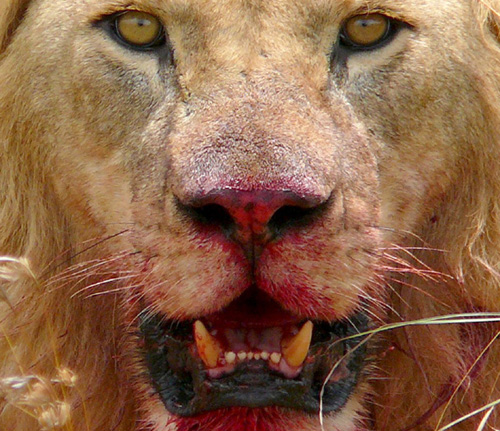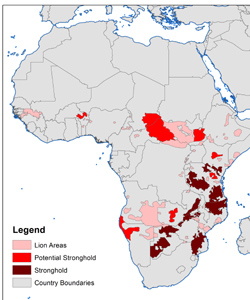 A good scientific paper on lion population declines embarrasses NatGeo and provides evidence that recreational hunting of lion may soon be illegal.
A good scientific paper on lion population declines embarrasses NatGeo and provides evidence that recreational hunting of lion may soon be illegal.
The excellent scientific survey by Duke scientists published Tuesday in the journal of Biodiversity and Conservation shows serious contractions of African wilderness with lion decline as the principal indicator. But NatGeo’s exaggeration of the problem in order to raise money is appalling.
The research was funded by the National Geographic Big Cat Initiative, but what disturbs me is that National Geographic itself has grossly distorted the findings (or ignored them, not sure which).
The study concludes that there are about 32,000 lions remaining in Africa, today. NatGeo’s “Lion Decline Map” shows only 20,000 (less than two-thirds the science) with a projected “???” intended to mean “0″ by 2020. The glitzy web presentation ends with requests for donations.
This pandering to fictional catastrophe fits the current NatGeo model embedded in the current lineup on its cable television channel, which alters between the interesting, scandalous and soap-opry. NatGeo is making bundles, scientists still depend upon it, but it’s gone Ruperty.
Meanwhile, the Duke study is important.
While there is nothing particularly surprising in the study, it confirms that lion populations are in serious decline (32,000 today compared to 100,000 in the 1960s) on the continent as a whole, and where relatively stable for the “long-term” are in diminished areas.
The 27 “strongholds” where lion populations are expected to prevail for the long-term are all in sub-Saharan Africa in the countries we know well:
 1. Tanzania
1. Tanzania
2. Botswana
3. Mozambique
4. South Africa & Zambia
5. Kenya
A sliver of stronghold area slips into Zimbabwe, but the enormous absence of lion in Zim today is a testament to the tragedy of conservation that has occurred there over the last generation under the murderous rule of Robert Mugabe.
The study used satellite imagery but through careful digital analysis and increased technological resolution was able to debunk earlier reports that certain areas were much healthier than they really are. These most critical areas are all in the northern part of the continent.
One of the study’s leading scientists is Stuart Pimm who has produced tomes of studies in his lifetime and who is probably the world’s most valuable African environmental statistician. Through the body of his past studies this one is credibly able to point to diminishing habitat and human competition for protected habitat as the principal cause.
But the study dares to confront another sensitive issue: big game hunting.
Without actually saying so, there is every implication throughout the study that recreational lion hunting should be prohibited.
I don’t know if there is coincidence to be found, or scientists and government officials tiptoeing on the tightrope, but last week the U.S. Fish and Wildlife Service announced it was reviewing the African lion’s status on the endangered species list.
This is the first step to listing lion as endangered. And if that happens, big game hunting of lion would effectively be over.
That seems only reasonable when African governments are now arresting local people for hunting lion, not to put a furry head above their fireplace, but to save their herds of goats.
Good work, Duke! Go to it, Fish & Wildlife! And put your pants back on, NatGeo.